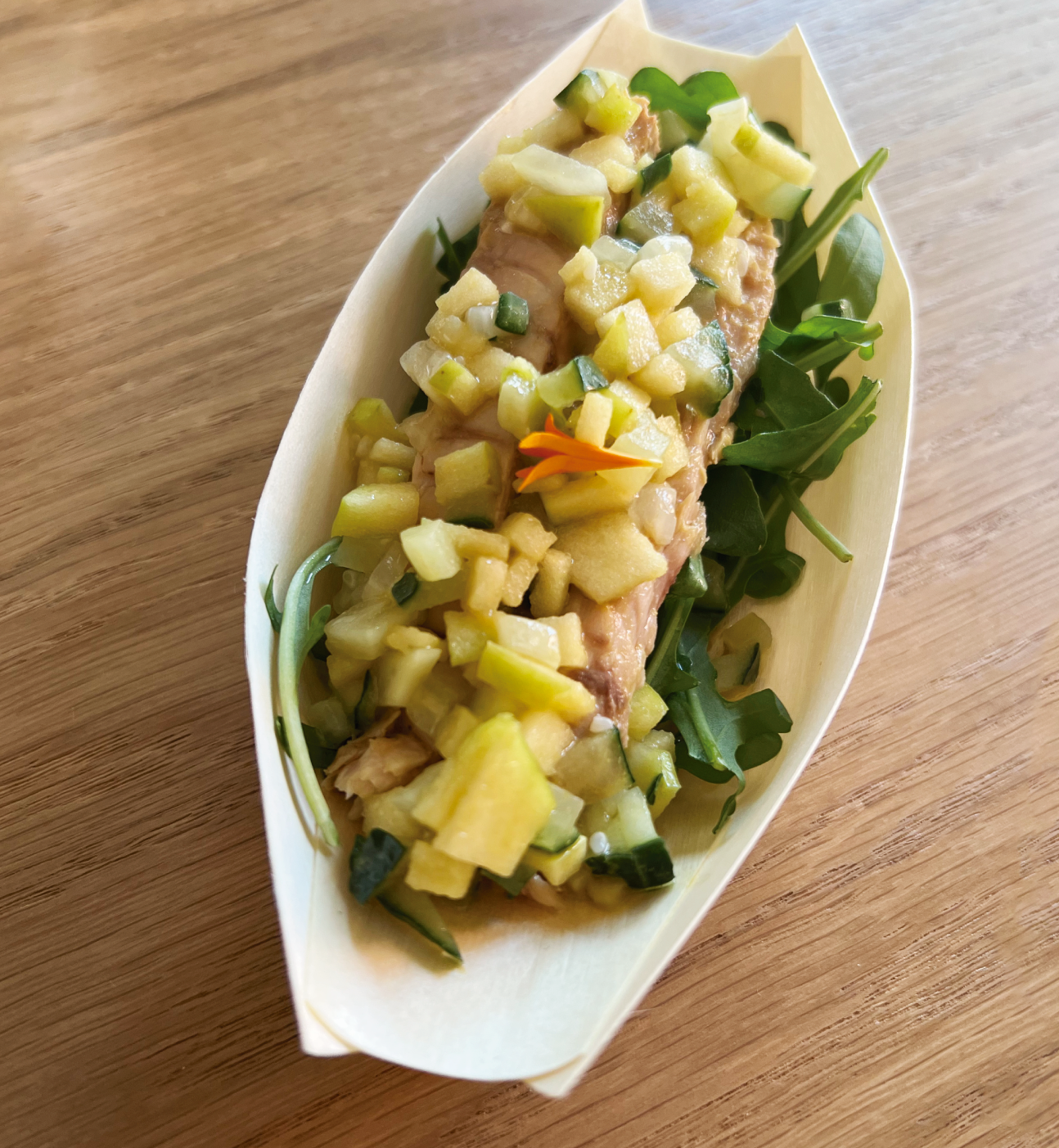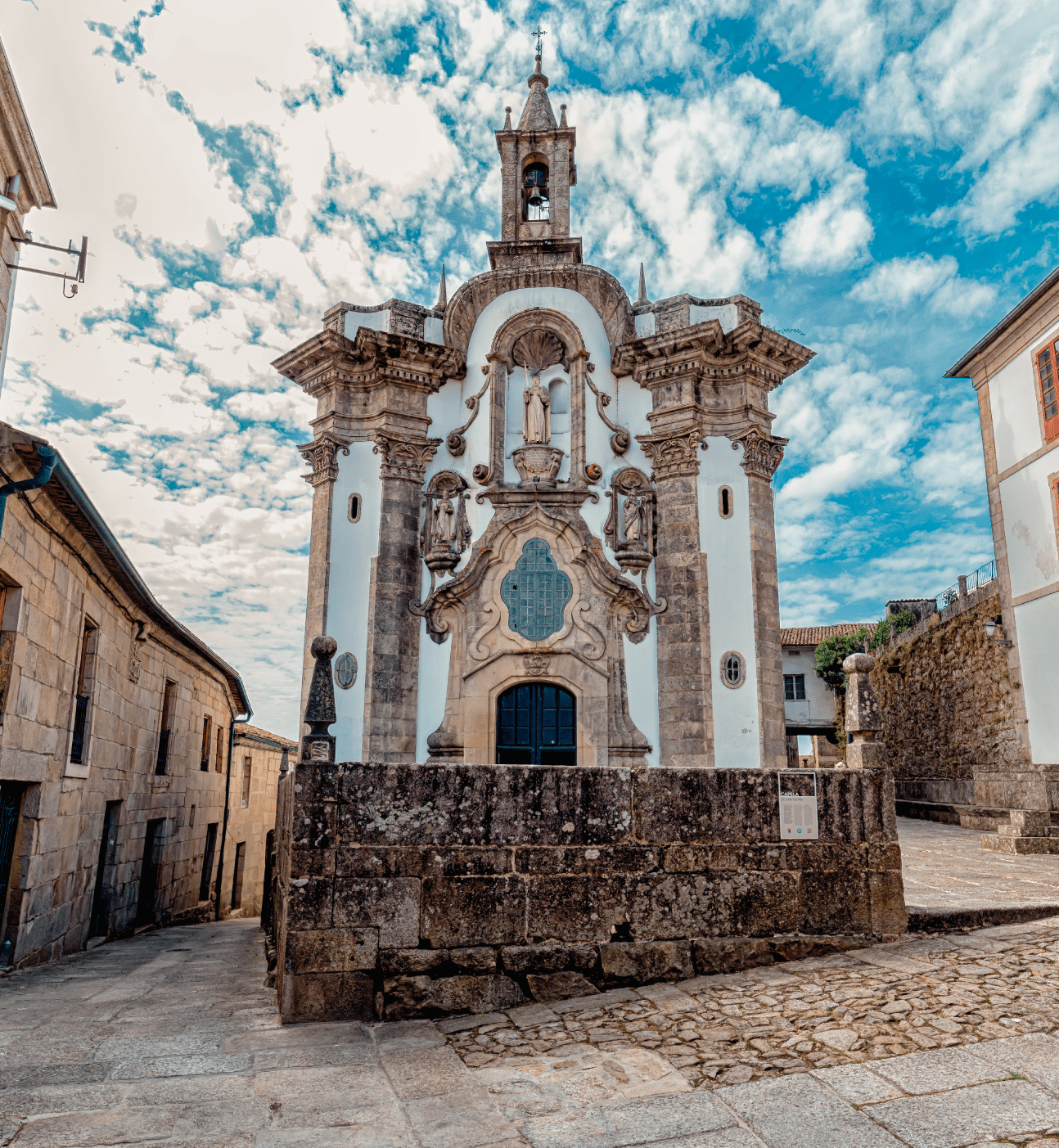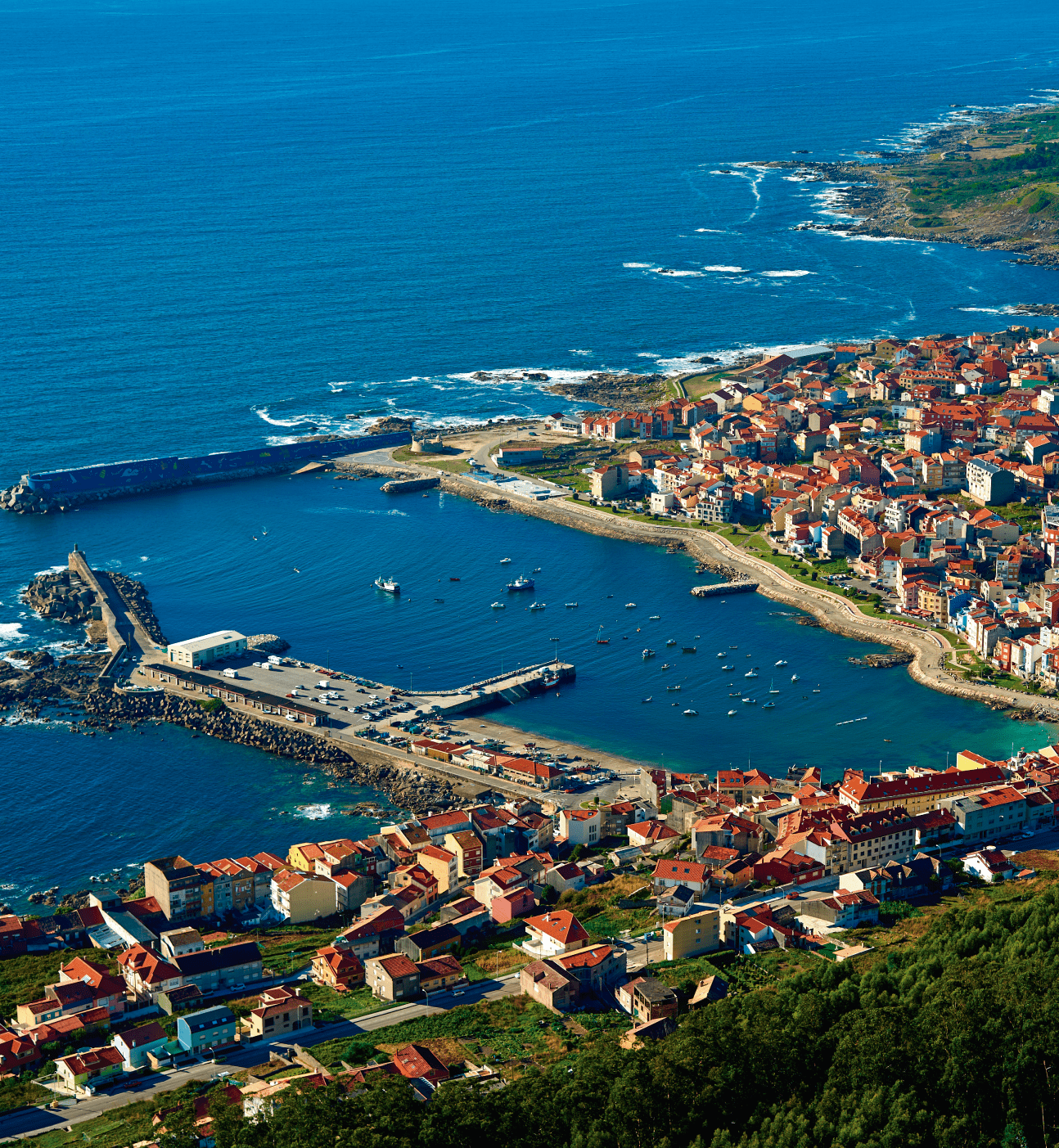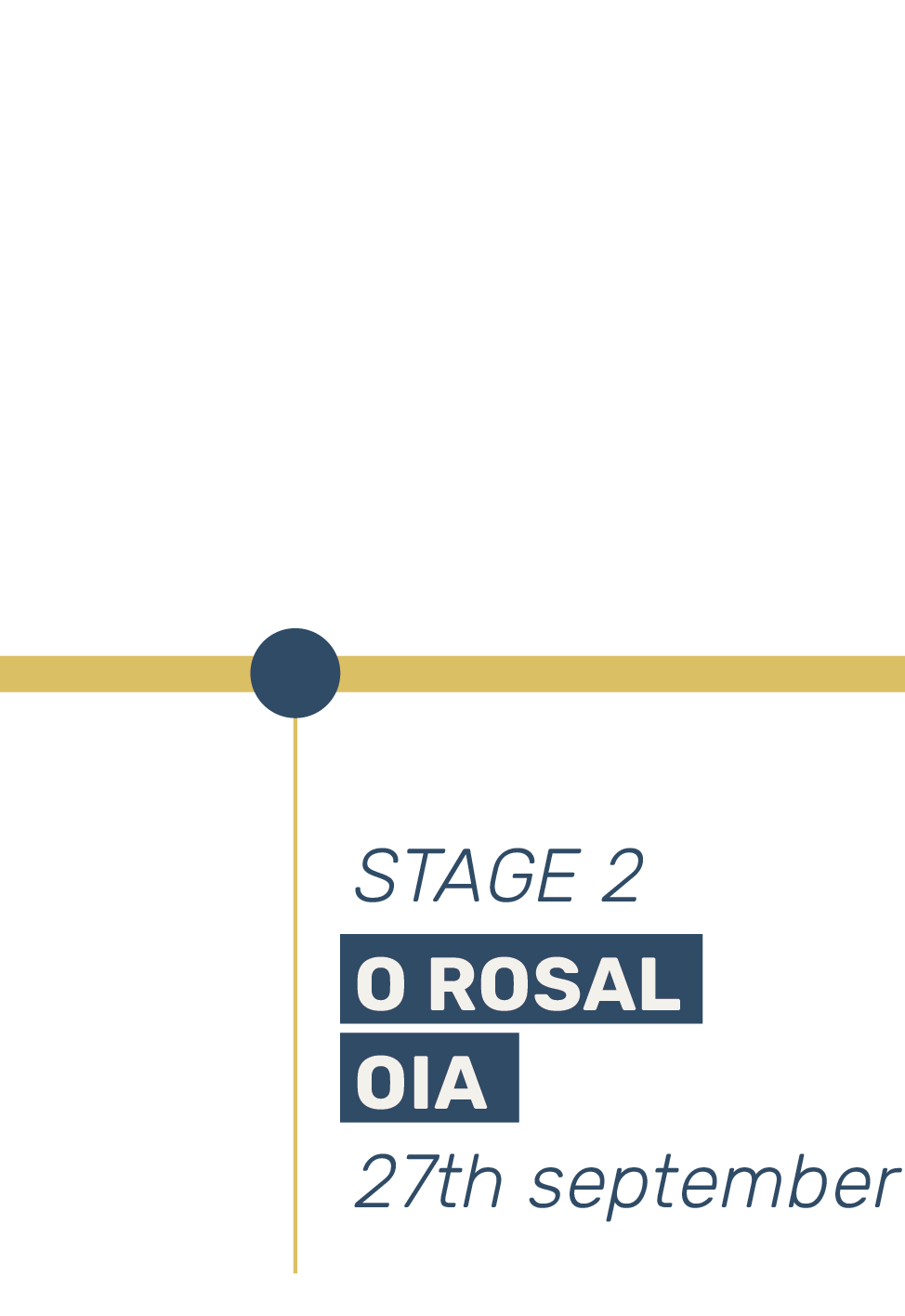Descripción del proyecto

Mackerel, scomber scombrus in its origin, is a saltwater bluefish between 18 and 50 cm in size. Its body is silvery white and has dark stripes on its back. During the winter it remains at the bottom of the sea without feeding.
Spain is the fourth European country in terms of number of catches and sales. In Galicia it is known as mackerel. It is a spiny fish, so its preparation in tinned form is usually a good idea.
It stands out for…
- High content of Omega 3 fatty acids (EPA and DHA)
- High content of vitamins B3, B12 and D
- High protein content
- High in minerals such as calcium, phosphorus and selenium
- Source of vitamin A.

Mackerel, scomber scombrus in its origin, is a saltwater bluefish between 18 and 50 cm in size. Its body is silvery white and has dark stripes on its back. During the winter it remains at the bottom of the sea without feeding.
Spain is the fourth European country in terms of number of catches and sales. In Galicia it is known as mackerel. It is a spiny fish, so its preparation in tinned form is usually a good idea.
It stands out for…
- High content of Omega 3 fatty acids (EPA and DHA)
- High content of vitamins B3, B12 and D
- High protein content
- High in minerals such as calcium, phosphorus and selenium
- Source of vitamin A.

Ingredients
- 1 tin of mackerel (fillets) in olive oil
- Yellow mustard
- Salt
- Arugula
- Green apple
- Cucumber
- Extra virgin olive oil
- Sherry vinegar
How to prepare
1. Open the can of mackerel, remove and save the olive oil and set aside.
2. Make a vinaigrette with a tablespoon of olive oil, a teaspoon of sherry vinegar and a dash of mustard.
3. Whisk and season with salt.
4. Cut into small pieces the cucumber and the apple with skin.
5. Add to the vinaigrette
6. Arrange the arugula leaves on the bamboo, enzyme the mackerel fillets and dress with the apple vinaigrette.


Ingredients
- 1 tin of mackerel (fillets) in olive oil
- Yellow mustard
- Salt
- Arugula
- Green apple
- Cucumber
- Extra virgin olive oil
- Sherry vinegar
How to prepare
1. Open the can of mackerel, remove and save the olive oil and set aside.
2. Make a vinaigrette with a tablespoon of olive oil, a teaspoon of sherry vinegar and a dash of mustard.
3. Whisk and season with salt.
4. Cut into small pieces the cucumber and the apple with skin.
5. Add to the vinaigrette
6. Arrange the arugula leaves on the bamboo, enzyme the mackerel fillets and dress with the apple vinaigrette.


In the past, pilgrims coming from Portugal reached the city of Tui by boat across the river Miño, hence this city is known as the «Gateway to the Camino«. However, in 1884 the International Bridge was built between Valença (Portugal) and Tui (Spain), opening a pedestrian crossing that hundreds of pilgrims have crossed every day since then.
In the Cathedral itself you can buy the Pilgrim’s Credential and get the first stamp to get our Compostela (Tui Cathedral does not open its doors until 10:00 am, so if you do not have the Credential, it is advisable to pick it up the day before starting the Camino. The Cathedral is open daily until 20:00 hours).
3 things to see in Tui
1. Convent of the Poor Clares: It stands out for having a church from the end of the 17th century that houses a beautiful altarpiece and for the vaulted passageway that runs underneath the temple.
2. Cathedral of Tui: Icon of the city with a fortified appearance, this late 11th century church impresses with its Romanesque architecture and the Gothic style details that were added later.
3. Chapel of Sano Telmo: At the end of the street ‘Entre Hornos’ you will find the Chapel of Sano Telmo, a unique example of Portuguese Baroque in Galicia. It is built over the house where the Dominican saint Sano Telmo died.

In the past, pilgrims coming from Portugal reached the city of Tui by boat across the river Miño, hence this city is known as the «Gateway to the Camino«. However, in 1884 the International Bridge was built between Valença (Portugal) and Tui (Spain), opening a pedestrian crossing that hundreds of pilgrims have crossed every day since then.
In the Cathedral itself you can buy the Pilgrim’s Credential and get the first stamp to get our Compostela (Tui Cathedral does not open its doors until 10:00 am, so if you do not have the Credential, it is advisable to pick it up the day before starting the Camino. The Cathedral is open daily until 20:00 hours).
3 things to see in Tui
1. Convent of the Poor Clares: It stands out for having a church from the end of the 17th century that houses a beautiful altarpiece and for the vaulted passageway that runs underneath the temple.
2. Cathedral of Tui: Icon of the city with a fortified appearance, this late 11th century church impresses with its Romanesque architecture and the Gothic style details that were added later.
3. Chapel of Sano Telmo: At the end of the street ‘Entre Hornos’ you will find the Chapel of Sano Telmo, a unique example of Portuguese Baroque in Galicia. It is built over the house where the Dominican saint Sano Telmo died.

If you walk through A Guarda you must climb the Santa Trega mountain and contemplate the unequalled views of the mouth of the Miño river.
The first stage of the Portuguese Coastal Way from A Guarda takes just 17 kilometres and follows the coastline. The Atlantic Ocean and the Galician coast become the protagonists of this first day that ends in Oia.
3 things to see in La Guardia
1. Santa Tegra Hillfort: Santa Tegra Hill and its Galician hillfort have been declared a National Historic-Artistic Monument and an Asset of Cultural Interest.
2. Seafaring symbols: The monument to the Sailor is a tribute to the people of the sea. Nearby is the Museum of the Sea, located in the replica of an old watchtower at the end of the promenade.
3. Beaches: The beaches of Arena Grande, Camposancos, Fedorento, O Sendero and the river beaches of O Codesal, La Armona and Lamiña are an essential stop to enjoy the calm that A Guarda offers.


If you walk through A Guarda you must climb the Santa Trega mountain and contemplate the unequalled views of the mouth of the Miño river.
The first stage of the Portuguese Coastal Way from A Guarda takes just 17 kilometres and follows the coastline. The Atlantic Ocean and the Galician coast become the protagonists of this first day that ends in Oia.
3 things to see in La Guardia
1. Santa Tegra Hillfort: Santa Tegra Hill and its Galician hillfort have been declared a National Historic-Artistic Monument and an Asset of Cultural Interest.
2. Seafaring symbols: The monument to the Sailor is a tribute to the people of the sea. Nearby is the Museum of the Sea, located in the replica of an old watchtower at the end of the promenade.
3. Beaches: The beaches of Arena Grande, Camposancos, Fedorento, O Sendero and the river beaches of O Codesal, La Armona and Lamiña are an essential stop to enjoy the calm that A Guarda offers.





















